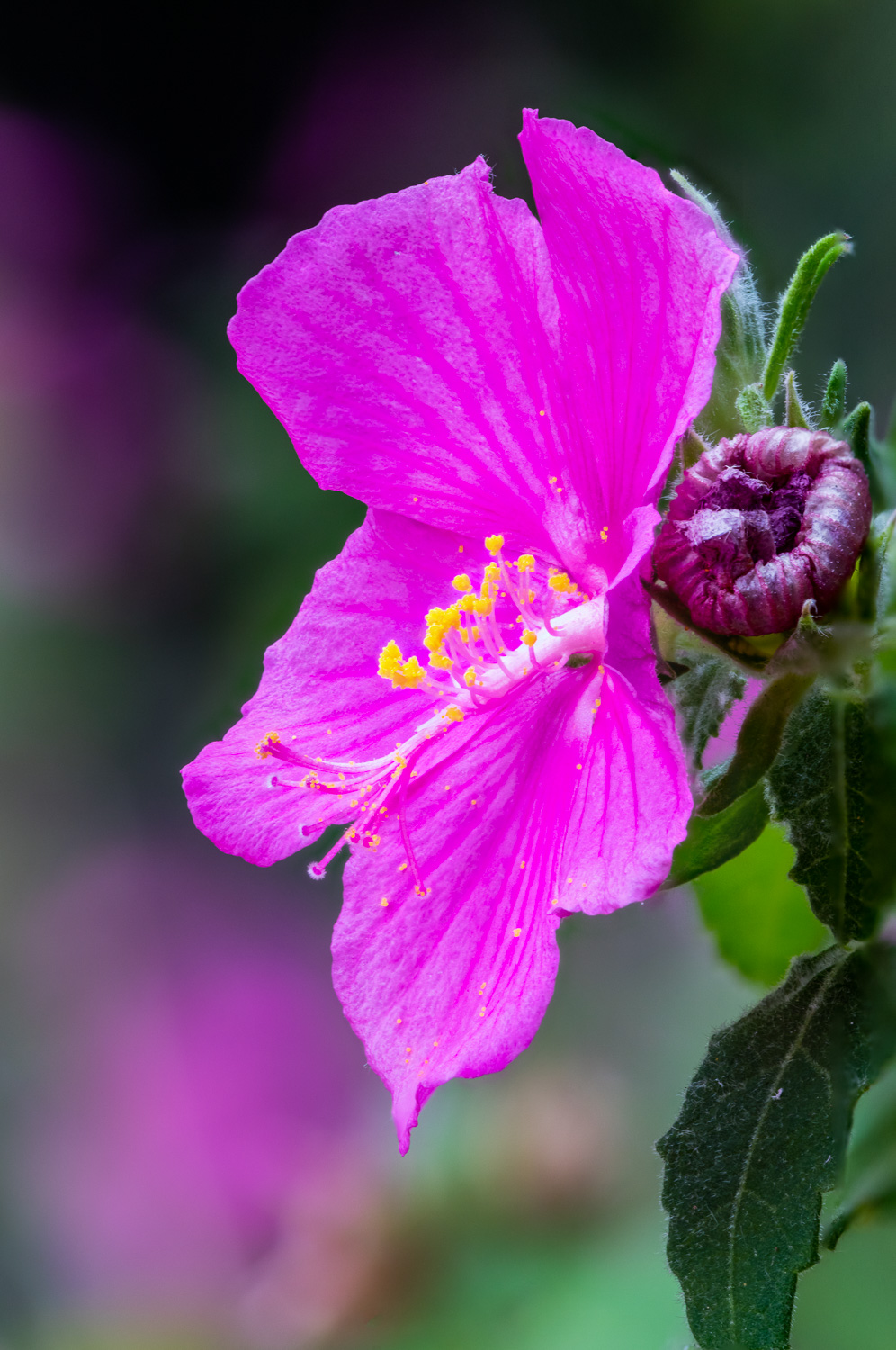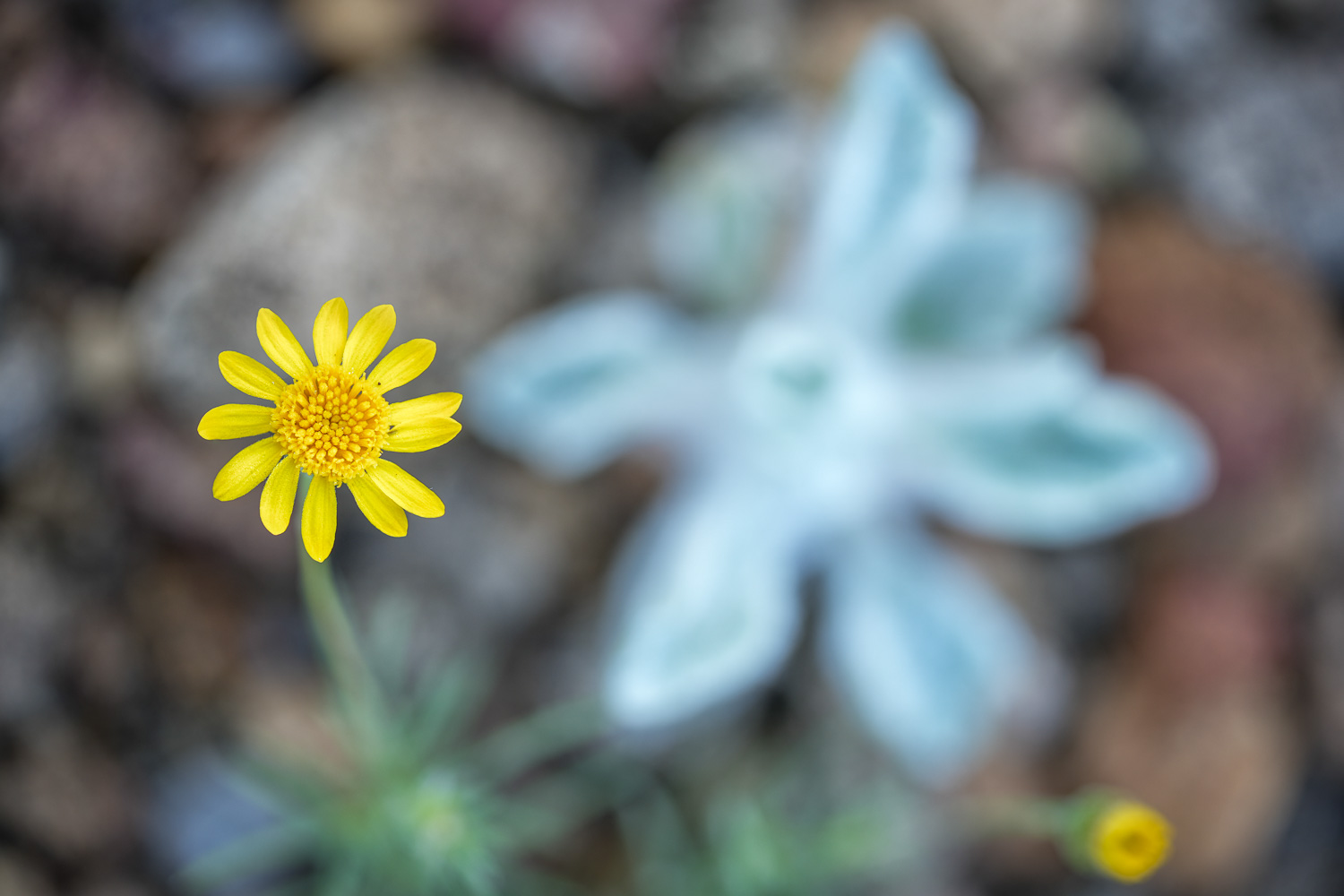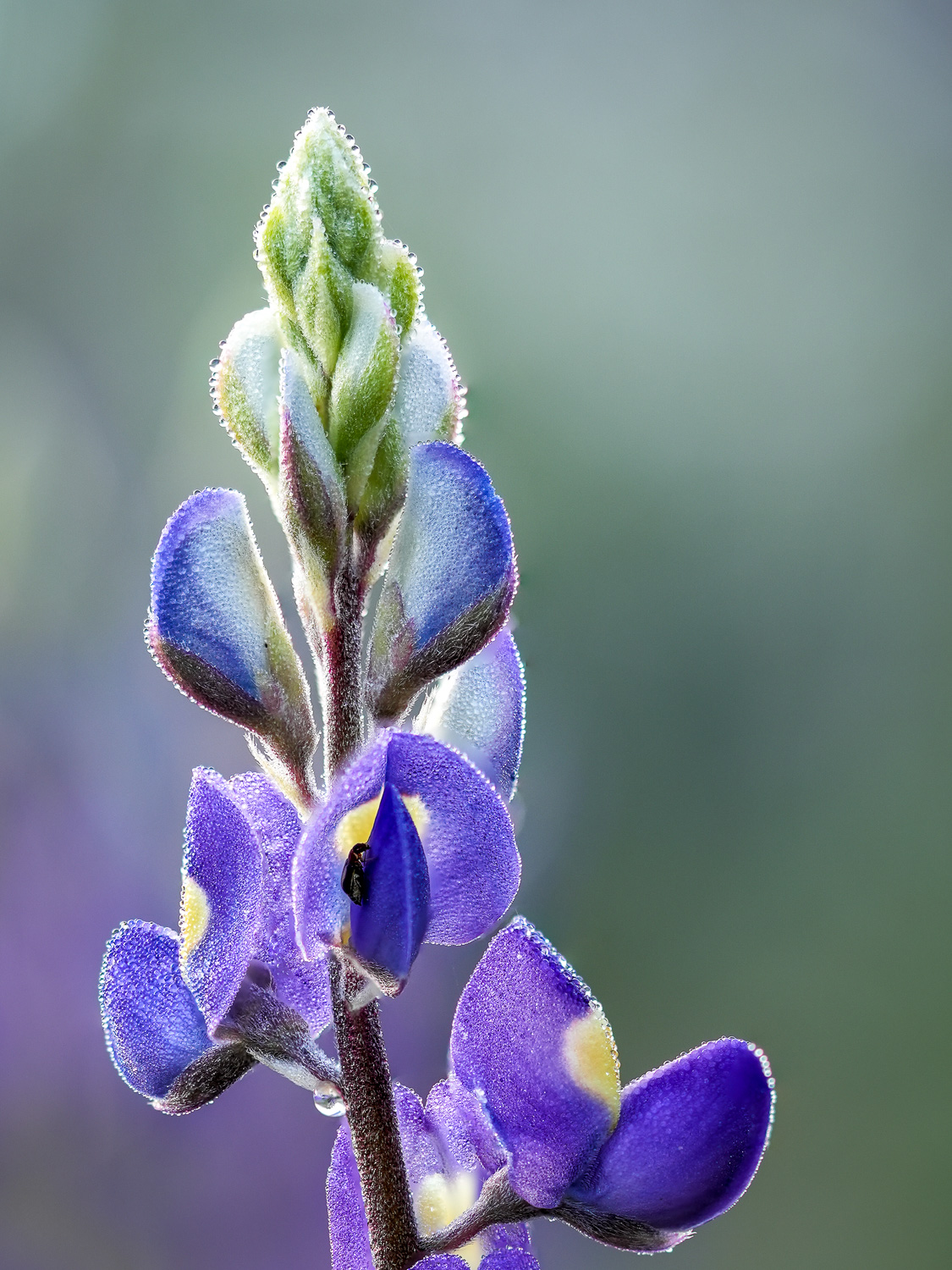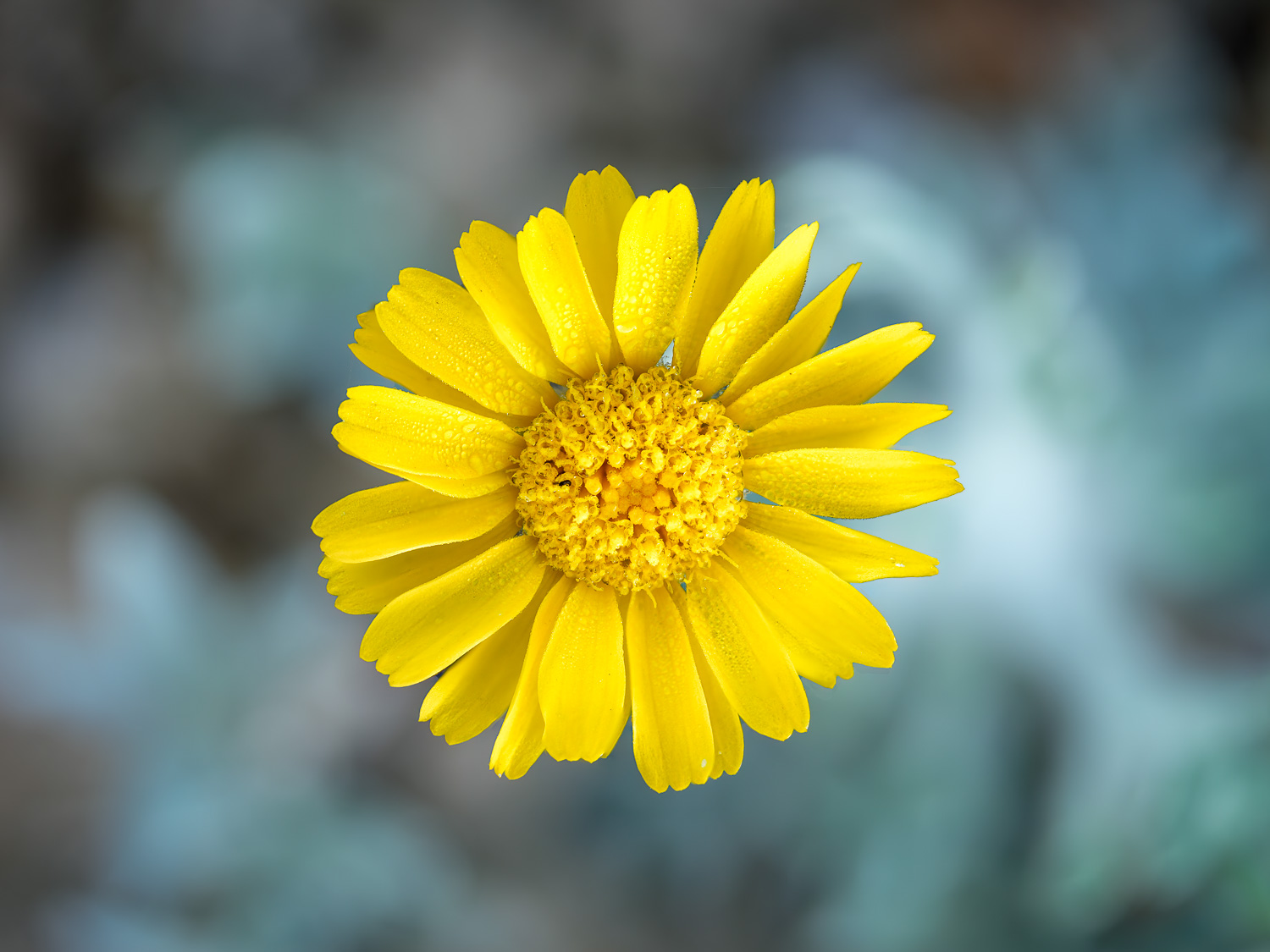There is a Rock Rose bush in the back yard and all the flowers had wilted with the summer heat. I looked earlier this week and saw that the bush was filled with flowers once again. So, I went out yesterday morning to photograph one of them. I used the focus-stacking technique as I did with the other flowers that I posted last week. The only difference in this one is that I used my manual focus rail instead of turning the focus ring on the lens. Using a manual focus rail delivers better results but it requires some mathematical calculations to obtain the desired outcome. Using the focus ring is a trial-and-error approach.
Like other macro photographers, I developed a macro focus rail spreadsheet which helps me calculate the number of focus rail knob turns per image and how many images to take. In order to calculate all of this I need to know the lens focal length, aperture setting, sensor type, distance to subject, the depth of the subject, and the distance the rail travels per knob turn. Armed with this information I can obtain the necessary data to capture the image. I’m happy to send you the spreadsheet. Just drop me a note and I’ll forward it via email.

This image was taken with my Canon EOS 5DS using my Canon EF 100mm f/2.8 Macro Lens. The camera was set on Aperture Priority with the aperture set at f/8, shutter speed at 1/30th of a second and the ISO set at 400. I did not use a flash to light the subject. I used the Kirk FR-2 Focusing Rail to capture the 20 images, I brought them together using Zerene Stacker. I then used Lightroom, Photoshop and Nik Color Efex Pro to finalize the image.
This image is best viewed large. Clock on the image to enlarge it. Also, you can access the profile for this flower by clicking here. Please use the section below to post your comments, questions or suggestions.



Nicely done, Terry. Looks like you finally got around to setting up your rail. It did a great job.
Thanks Rick.
Great proof of concept for your rail spreadsheet. The image looks very sharp, so the calculations and the overlap must have been just right. Zyrene, not Helicon?
It’s great when things work as planned. I tried Helicon but for some reason I got a lot of ghosting. So, I fired up Zerene and it worked. I found that I have to use Helicon, Zerene and Photoshop for different situations.